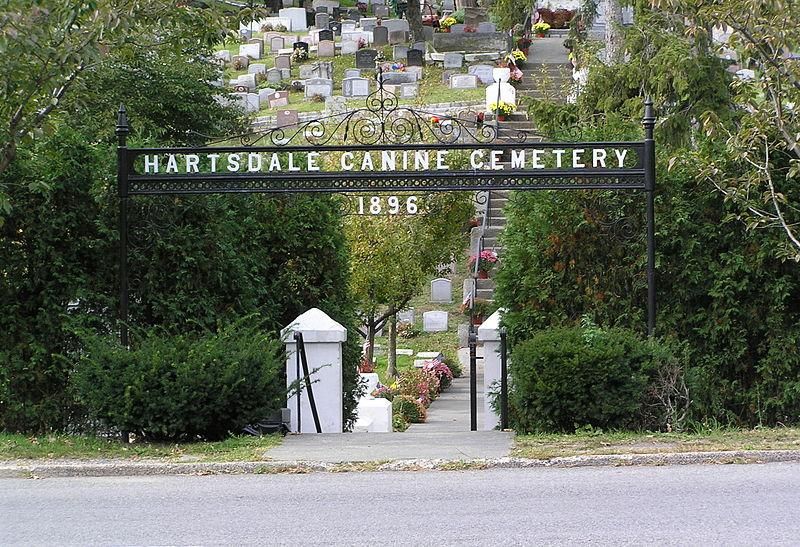Pet Cemeteries Reveal Evolution of Humans’ Relationships With Furry Friends
By analyzing a thousand tombstones, an archaeologist revealed how animals evolved from companions to family in just 100 years
/https://tf-cmsv2-smithsonianmag-media.s3.amazonaws.com/filer/b8/5a/b85ab19c-60c3-4a9a-92d1-12e3243dbf78/87c24a78-2fd7-4e8c-a12a-d8339ffd4329-screen-shot-2020-10-26-at-40212-pm.jpeg)
In 1881, Cherry the Maltese terrier was laid to rest in Hyde Park in London. "Poor Cherry. Died April 28. 1881," the epitaph on her tombstone read. Cherry was the first pet buried in the park, which is considered the first pets-only cemetery in the United Kingdom.
She must have been a beloved pup for her owners to arrange a memorial at a time when it was quite unusual and largely unheard of. Since then, 300 pets have been buried in Hyde Park's pet cemetery, reports Sarah Sloat for Inverse. A new study, published yesterday in the journal Antiquity, tracks the evolution of humans' relationships with their furry companions by cataloging and analyzing more than 1,000 tombstones in four of the United Kingdom's pet cemeteries, including Hyde Park. The study reveals how dramatically pets evolved from mere companions to beloved family members within the span of just a few decades, reports David Grimm for Science.
Archaeologists often look to human burial sites to reconstruct what a community's kinship groups, socio-economic statuses, societal structures, attitudes towards religion and local demographics looked like in the past—making them a hotspot for archaeological research. When Eric Tourigny, a historical archaeologist and the study's author, was excavating a 19th century house in Toronto, Canada, a few years ago, he learned that the owners had buried their dog in the backyard. He began to wonder: "Why can't we look at pet cemeteries to reconstruct past human-animal relationships?" reports Mindy Weisberger for Live Science.
Tourigny decided to visit four large pet cemeteries in the United Kingdom—dating back to Cherry's death in 1881—and collected data from 1,169 different grave markers from 1881 to 1991. In the 19th century, people often disposed of their dead pets in the river or trash, or maybe they opted to sell the bodies for their skin or meat, Tourigny tells Science. So, deciding to bury them was a turning point in our evolving relationship with animals that reflects the values and norms of historical eras.

During England's Victorian period, which spanned from 1837 to 1901, mourning was a highly structured practice with proper rules and etiquette. Grief became a more public practice, even towards animals. The pets' epitaphs "often referenced values like obedience and fidelity, which were themselves core Victorian ideals," Tourigny tells Inverse. The gravestones were simple and engraved in sentiments like "Darling Fluff" or "Our Dear Wee Butcha."
Tourigny noticed another shift after World War II when owners began to refer themselves as "Mummy" and "Dad" on the epitaphs, reports Science. There was also a significant rise in how many gravestones had the family's surname written on it, too. And throughout the 20th century, cat graves became increasingly more common.
Philip Howell, a historical geographer at the University of Cambridge, tells Science that this shift represents "a greater willingness to identify pets as one of the family."
This change is reflective of pet-related inventions at the time—dogs finally had flea shampoo and cats had litter to use, so they were invited into the house more often, reports Science.
In the 19th century, tombstones rarely featured religious symbols—like Christian crosses or the Jewish Stars of David—and avoided any mention that pets could be reunited with owners in the afterlife. At the time, the United Kingdom was still highly religious, and Christianity traditionally said that animals cannot go on to the afterlife.
"Just saying your animal is going to heaven would have been very controversial," Tourigny tells Science.
Tourigny's data revealed that before 1910, only around one percent of tombstones alluded to religion or spirituality. After World War II, more pet cemetary tombstones were bestowed with the family name, and nearly 20 percent of tombstones incorporated religious and spirtual references or motifs, implying that "owners were awaiting a reunion in the afterlife," Tourigny tells Archie Bland for The Guardian.
Tourigny pieced together the evolution of human-pet relationships based on gravestones, but that data was only focused on pets in the United Kingdom. The relationships between animals and humans differs drastically from region to region, much less across the world, so it's unclear how extensively these results can be applied to other places, Howell tells Science.
Pet cemeteries filled up around the early 1990s, marking an end to Tourigny's data collection. But now, pets seem to be more valued than ever. In 2014, Catholic pet lovers rejoiced when Pope Francis hinted that their beloved companions would join them in heaven. And in 2016, New York governor Andrew Cuomo made it legal to bury pets next to their owners in human cemeteries, saying that "four-legged friends are family."
"Who are we to stand in the way if someone’s final wish includes spending eternity with them?" Cuomo said.
/https://tf-cmsv2-smithsonianmag-media.s3.amazonaws.com/accounts/headshot/rasha.png)
/https://tf-cmsv2-smithsonianmag-media.s3.amazonaws.com/accounts/headshot/rasha.png)